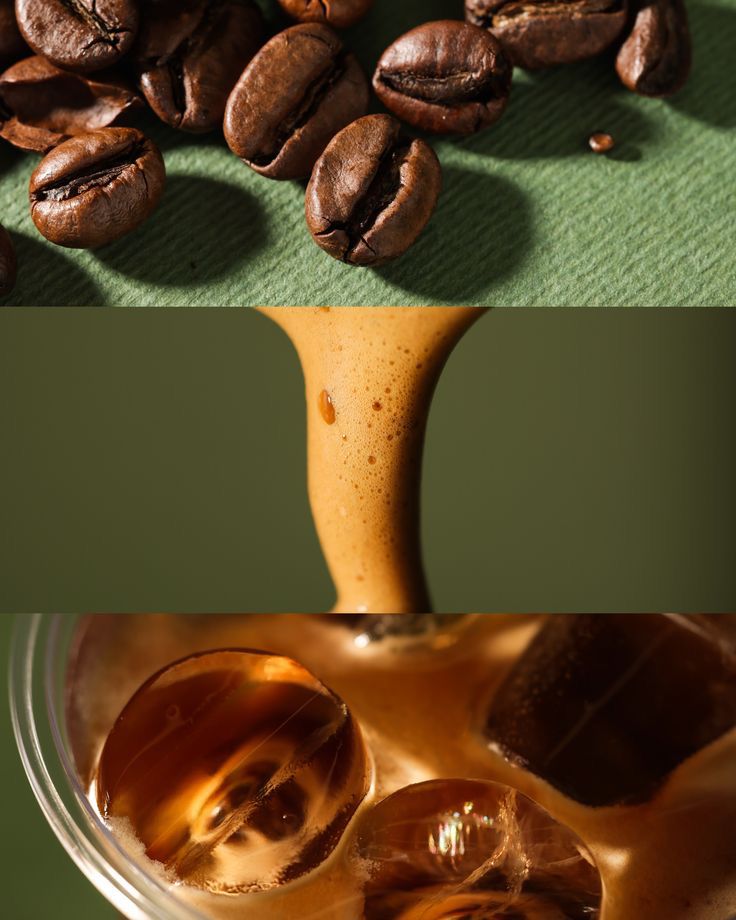أولا: المقدمة
تُعدّ مشروبات القهوة المتخصصة اتجاهًا متزايدًا في ثقافة القهوة. تتوفر هذه الخلطات الفريدة في المقاهي والمطاعم حول العالم. غالبًا ما تحتوي مشروبات القهوة المتخصصة على الحليب والرغوة والنكهات والشراب المُنكّه ومكونات أخرى تُميّزها عن القهوة المُحضّرة التقليدية. من اللاتيه إلى الموكا إلى الكابتشينو وغيرها، تُقدّم مشروبات القهوة المتخصصة خيارات متنوعة تناسب جميع الأذواق. سيُقدّم هذا العرض لمحةً موجزةً عن بعض مشروبات القهوة المتخصصة الشهيرة وأنواعها المُختلفة.
أ. شرح مشروبات القهوة المتخصصة
مشروبات القهوة المتخصصة هي فئة من مشروبات القهوة تتميز بمكونات وتقنيات تحضير خاصة. تتضمن عادةً مزج الإسبريسو والحليب والرغوة والشراب والنكهات و/أو مكونات أخرى لخلق تجربة مذاق فريدة. من أشهر مشروبات القهوة المتخصصة: اللاتيه، والكابتشينو، والأمريكانو، والموكا، والماكياتو.
ب. شعبية مشروبات القهوة المتخصصة
ازدادت شعبية مشروبات القهوة المتخصصة خلال السنوات القليلة الماضية، وخاصةً بين الأجيال الشابة. ويُعزى ذلك إلى ازدياد شعبية مقاهي القهوة المتخصصة مثل ستاربكس، وبيتس كوفي آند تي، وإنتلجنسيا. إضافةً إلى ذلك، يُفضل الكثيرون النكهات والمذاق الفريد الذي تُقدمه مشروبات القهوة المتخصصة مقارنةً بالقهوة التقليدية أو الإسبريسو. ونتيجةً لذلك، أصبحت مشروبات القهوة المتخصصة شائعةً في معظم مدن العالم.
ج. الغرض من المخطط
يهدف هذا الملخص إلى تقديم لمحة عامة عن مشروبات القهوة المتخصصة، وشعبيتها، وأنواعها المختلفة. كما يقدم معلومات عن مكوناتها، بالإضافة إلى نصائح لتحضيرها منزليًا. كما يناقش كيفية الاستمتاع بمشروبات القهوة المتخصصة ساخنة وباردة.
II. لاتيه
أ. تعريف وأصل اللاتيه
اللاتيه مشروب قهوة نشأ في إيطاليا، ويحظى بشعبية عالمية واسعة. يتكون من الإسبريسو والحليب المبخر، وغالبًا ما تُغطى بطبقة خفيفة من الرغوة. يتوفر اللاتيه بأنواع مختلفة، مثل الكابتشينو والماكياتو والموكا وغيرها. تعود أصول اللاتيه إلى أوائل القرن العشرين، عندما طُوّر لجعل القهوة أكثر لذة لمن يجدونها قوية أو مُرّة.
ب. المكونات والتحضير
المكونات الرئيسية للاتيه هي الإسبريسو والحليب المبخر. يُحضّر الإسبريسو بسكب الماء الساخن على حبوب البن المطحونة ناعماً تحت ضغط حوالي تسعة بارات. ثم يُضاف الحليب المبخر في دوائر صغيرة ليُعطي قوام اللاتيه الكريمي المميز. يمكن إضافة نكهات إضافية إلى اللاتيه، مثل الشراب المحلى ومسحوق الكاكاو والتوابل. لتحضير لاتيه في المنزل، كل ما تحتاجه هو آلة إسبريسو على الموقد، وبعض البن المطحون، والحليب المبخر.
ج. أنواع مختلفة من اللاتيه (مثل اللاتيه بنكهات مختلفة، اللاتيه المثلج)
هناك العديد من أنواع اللاتيه، سواءً أكانت منزلية الصنع أم متوفرة في المقاهي حول العالم. من بين الأنواع الشائعة اللاتيه المُنكّه، والذي يستخدم شرابًا محلىً لإضافة الحلاوة والنكهة. أما اللاتيه المثلج، فيمكن تحضيره ببساطة بسكب الإسبريسو البارد فوق الثلج وإضافة الحليب المُبخّر أو شراب مُنكّه. كما يُمكن تحضير اللاتيه بحليب بديل، مثل حليب اللوز أو الصويا أو جوز الهند أو الشوفان، للحصول على لاتيه خالٍ من منتجات الألبان. كما يُمكن إضافة نكهات إضافية، مثل التوابل ومسحوق الكاكاو والشراب، لتحضير لاتيه فريد ومبتكر.
ثالثًا: كابتشينو
أ. تعريف وأصل الكابتشينو
الكابتشينو مشروب إيطالي مصنوع من الإسبريسو، ويتكون من كميات متساوية تقريبًا من الإسبريسو والحليب المبخر والرغوة. يُقدم عادةً مع رشة من مسحوق الكاكاو أو القرفة لإضفاء نكهة إضافية. يُشتق اسم "كابتشينو" من تشابه لونه مع ملابس الرهبان والراهبات في الرهبانية الكبوشية. أصول الكابتشينو غير معروفة تمامًا، ولكن يُعتقد أنها نشأت في إيطاليا بين الحربين العالميتين الأولى والثانية. في الآونة الأخيرة، أصبح الكابتشينو مشروبًا شائعًا عالميًا كمشروب قهوة مفضل.
ب. المكونات والتحضير
يُحضّر الكابتشينو عادةً باستخدام الإسبريسو والحليب المُبخّر والرغوة. الإسبريسو هو قهوة مُركّزة تُحضّر بدفع الماء الساخن المضغوط عبر حبوب البن المطحونة ناعمًا. يجب أن يكون الحليب المُبخّر رغويًا مع طبقة سميكة من الرغوة الدقيقة فوقه. لتحضير الكابتشينو، يُحضّر الإسبريسو أولًا في كوب إسبريسو. ثم يُسكب الحليب في إبريق معدني ويُرغى حتى يصبح ضعف حجمه الأصلي تقريبًا بقوام مخملي. أخيرًا، يُسكب الحليب في كوب الإسبريسو ويُزيّن بالرغوة أو مسحوق الكاكاو لإضافة لمسة إضافية من النكهة.
ج. أنواع الكابتشينو (مثل الكابتشينو الجاف، الكابتشينو المنكه)
أكثر أنواع الكابتشينو شيوعًا هي الكابتشينو الجاف، والكابتشينو الرطب، والكابتشينو الجاف جدًا. يحتوي الكابتشينو الجاف على كمية إسبرسو أكبر من الحليب المبخر، بينما يحتوي الكابتشينو الرطب على كمية حليب أكبر من الإسبريسو. أما الكابتشينو الجاف جدًا فهو مزيج من الاثنين. بالإضافة إلى ذلك، تقدم العديد من المقاهي كابتشينو بنكهات مضافة، مثل الشراب أو التوابل، بالإضافة إلى أنواع منزوعة الكافيين لمن يفضلون نكهة أخف.
رابعا. أمريكانو
أ. تعريف وأصل الأمريكانو
الأمريكانو مشروب قهوة مصنوع من الإسبريسو، أصله من إيطاليا. يُحضّر بجرعة أو جرعتين من الإسبريسو والماء الساخن. ينتج عن هذا المزيج مشروبٌ بقوةٍ تُشبه قهوة التصفية الأمريكية التقليدية، مع لمسةٍ خفيفةٍ من نكهة الإسبريسو المميزة. اسم "أمريكانو" مشتقٌّ من كلمة إيطالية تعني "أمريكي"، في إشارةٍ إلى شعبيته بين الجنود الأمريكيين المتمركزين في إيطاليا خلال الحرب العالمية الثانية.
ب. المكونات والتحضير
يتطلب تحضير الأمريكانو مكونين: الإسبريسو والماء الساخن. يُحضّر بسكب جرعة أو جرعتين من الإسبريسو في كوب، ثم إضافة الماء الساخن. يمكن تقديم المشروب مع السكر أو الحليب، حسب تفضيلات الشخص. كما يمكن نكهته بالشراب أو التوابل أو غيرها من النكهات لإضافة لمسة مميزة إلى المذاق.
ج. تنويعات الأمريكانو (على سبيل المثال الأسود الطويل، العين الحمراء)
هناك عدة أنواع شائعة من الأمريكانو. لونغ بلاك هو نسخة أقوى من المشروب، تُحضّر بإضافة الماء الساخن إلى جرعتين من الإسبريسو. ريد آي مشابه، لكن مع إضافة جرعة إضافية من الإسبريسو لمزيد من القوة. فلات وايت هو نوع يستخدم كمية أقل من الماء الساخن، مما ينتج عنه قوام أكثر كثافة وكريمة. وأخيرًا، لونغو هو نسخة إيطالية تتكون من كمية أكبر من الماء الساخن مقارنةً بالأمريكانو، مما يمنحه نكهة أخف.
الخامس. موكا
أ. تعريف وأصل الموكا
الموكا نوع من مشروبات القهوة يُصنع بخلط الإسبريسو مع الشوكولاتة. نشأت في شمال إيطاليا واشتهرت في أوائل القرن التاسع عشر بفضل نكهتها الفريدة. اسمها مشتق من كلمة "التوت" الإيطالية، التي تشير إلى لون المشروب الأرجواني المميز. هناك عدة أنواع من الموكا، مثل الموكا البيضاء المصنوعة من الشوكولاتة البيضاء بدلاً من الشوكولاتة؛ وموكا اللوز أو البندق، التي تستخدم المكسرات بدلاً من الشوكولاتة.
ب. المكونات والتحضير
الموكا نوع من مشروبات القهوة، يُحضّر من الإسبريسو والشوكولاتة والحليب الساخن والسكر. لتحضير الموكا، سخّن الحليب في قدر على نار متوسطة حتى يتصاعد منه البخار دون أن يغلي. ثم أضف الشوكولاتة - داكنة أو بيضاء حسب الرغبة - إلى الحليب الساخن وحرّك حتى تذوب. في كوب منفصل، اخلط جرعة واحدة من الإسبريسو مع السكر، حسب الرغبة. صبّ مزيج الشوكولاتة والحليب المذاب في الكوب مع الإسبريسو وحرّك المزيج جيدًا. قدّم الموكا اللذيذة واستمتع بها!
ج. أنواع مختلفة من الموكا (مثل موكا الشوكولاتة البيضاء، موكا المثلجة)
الموكا مشروب متعدد الاستخدامات، ويمكن تعديله ليناسب جميع الأذواق والتفضيلات. أشهر أنواعه هو موكا الشوكولاتة البيضاء، المصنوع من الشوكولاتة البيضاء بدلاً من الشوكولاتة الداكنة؛ وعادةً ما يكون هذا النوع أحلى من الموكا التقليدية. هناك أيضاً العديد من الأنواع الأخرى، مثل موكا المثلجة (التي تستخدم الحليب البارد بدلاً من الساخن)، وموكا اللوز أو البندق، التي تُحضّر بشراب بنكهة اللوز أو البندق بدلاً من الشوكولاتة. ومن الأنواع الأخرى الممكنة إضافة توابل مثل القرفة أو جوزة الطيب لتجربة غنية بالنكهة.
السادس. ماكياتو
أ. تعريف وأصل الماكياتو
الماكياتو مشروب إيطالي تقليدي مصنوع من الإسبريسو، ويتكون من جرعتين من الإسبريسو مع قليل من الحليب المبخر والرغوة. يُترجم اسم الماكياتو إلى "مُرَقَّع" بالإيطالية، في إشارة إلى تناثر الحليب الذي يُضفي على المشروب طابعه المميز. يُعتقد أن أصله يعود إلى إيطاليا خلال القرن العشرين، واكتسب شعبية واسعة حول العالم منذ ذلك الحين.
ب. المكونات والتحضير
الماكياتو مشروب بسيط ولكنه غني بالنكهة، يُحضّر عادةً بجرعتين من الإسبريسو، وحليب مبخر، ورغوة فوقه. في بعض الأنواع، يمكن استبدال الرغوة برذاذ من شراب مُنكّه أو ملعقة صغيرة من الكريمة المخفوقة. لتحضير الماكياتو، حضّر أولًا جرعتين من الإسبريسو وأضفهما إلى كوب أو كوب إسبريسو. ثمّ سخّن الحليب بالبخار حتى يصبح كريميًا ورغويًا؛ وللحصول على نكهة تقليدية، ضع حوالي نصف بوصة من الرغوة على الوجه. أضف الحليب المبخر قبل إضافة أي شراب أو صلصات ترغب بها، ثمّ قدّمه.
ج. أنواع مختلفة من الماكياتو (مثل الكراميل ماكياتو، بريف ماكياتو)
الماكياتو مشروب إسبريسو متعدد الاستخدامات، يُمكن تقديمه بأشكال ونكهات مُختلفة. يُعدّ الكراميل ماكياتو من أشهر أنواع الماكياتو التقليدي، ويُحضّر من جرعتين من الإسبريسو، وحليب مُكثّف مُحلّى، وحليب مُرغى، ويُغطّى بصلصة الكراميل. وهناك نوع آخر وهو بريف ماكياتو، ويُحضّر من جرعتين من الإسبريسو ممزوجتين بنصف ونصف من الحليب المُبخّر بدلاً من الحليب العادي. ولمن يبحث عن نكهة مُنعشة، يُمكن أيضاً تحضير نسخة مُميّزة من قهوة الموكا بمزج جرعتين من الإسبريسو مع شراب الشوكولاتة، ثمّ إضافة الحليب الدافئ المُرغى والكريمة المخفوقة. ولخيار أخف، يُمكن أيضاً تحضير الماكياتو المُثلّج بخلط جرعتين من الإسبريسو المُبرّد فوق مكعبات الثلج، مع الحليب البارد والمُحلّي حسب الرغبة. مهما كان نوع القهوة الذي تُفضّله أو تطلبه، سيُلبي هذا المشروب الكلاسيكي جميع الأذواق!
٧. الخاتمة
أ. تلخيص النقاط الرئيسية
تُقدم مشروبات القهوة المتخصصة، مثل اللاتيه والكابتشينو وغيرها، طريقةً لذيذةً للاستمتاع بمشروبات الإسبريسو. تشمل الخيارات الشائعة الماكياتو التقليدي، بالإضافة إلى نكهات مبتكرة مثل الكراميل ماكياتو، والبريف ماكياتو، وكافيه موكا. مهما كانت النكهة التي تختارها، ستُقدم لك هذه المشروبات تجربةً فريدةً تُنعشك دائمًا!
ب. أهمية مشروبات القهوة المتخصصة في ثقافة القهوة
تُعدّ مشروبات القهوة المتخصصة جزءًا لا يتجزأ من ثقافة القهوة الأوسع، إذ تُقدّم طريقة فريدة ولذيذة للاستمتاع بمشروبات الإسبريسو. بمزجها نكهات مختلفة، تُقدّم هذه المشروبات تجربة ممتعة تُميّزها عن القهوة المُحضّرة التقليدية. كما تُقدّم مشروبات القهوة المتخصصة مُنشّطة للغاية، سواءً كنتَ بحاجة إليها في الصباح أو بعد الظهر. إنّ تنوعها وإبداعها يُتيحان لكلّ مُحبّي القهوة الاستمتاع بها.
ج. الأفكار النهائية والاتجاهات المستقبلية
إن الشعبية المتزايدة لمشروبات القهوة المتخصصة دليلٌ على تأثيرها على ثقافة القهوة الأوسع. بتقديمها نكهات كلاسيكية ومبتكرة، لا تزال هذه المشروبات تلقى استحسانًا من الهواة والذواقة على حد سواء. ومع تزايد استفادة مُعدّي القهوة من إمكانات الإبداع الكامنة في القهوة المتخصصة، سنستمر في رؤية أفكار مبتكرة تُحسّن تجربة قهوتنا - ولن يتباطأ هذا التطور قريبًا!
ثامناً: موارد إضافية
أ. ماركة القهوة الموصى بها
لمن يبحث عن أفضل أنواع القهوة وطرق تحضيرها للاستمتاع بفنجان قهوته اليومي، تفضلوا بزيارة متجرنا لتجربة قهوة رائعة. كما نوفر آلات قهوة ، مطاحن ، وأدوات تحضير .
ب. المجتمعات والمنتديات عبر الإنترنت لمحبي القهوة
بالنسبة لأولئك الذين يبحثون عن مجتمع عبر الإنترنت لمشاركة تجاربهم ومعرفتهم بالقهوة مع الآخرين، فهذه بعض من أفضل الخيارات.


